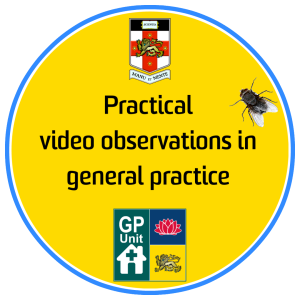I presented this abstract (PDF) at the General Practice Training & Education Conference, 26-27 August 2015, at the Hotel Grand Chancellor Hobart.
Authors:
- Michael Tam
- Andrew Knight
- Siaw-Teng Liaw
- Patrick Khoury
- Joel Rhee
- Alan Huynh
Prezi presentation:
Abstract
Background:
Direct observation is a core teaching and supervision method in general practice. This is typically done infrequently due to time pressures. Moreover, consultation dynamics change with the presence of the observer in the consultation room. Video observation addresses some of these issues, but historically comes with the barriers of cost, and lack of access to equipment.
Objective:
To develop a simple, inexpensive, and effective video observation technique that can be implemented easily by general practice supervisors.
Approach:
We explored and tested software and hardware solutions to develop and refine our methods and tools. This was done collaboratively – we used feedback from trainees, supervisors, patients, and GP academics to make iterative improvements to the techniques over a 9 month period.
Findings:
We developed a consenting procedure that was acceptable to patients. The observed consultations were naturalistic. Both trainees and supervisors reported that they found the video observation system useful.
Baby monitors are the simplest device to use – easy camera placement, battery powered, and foolproof operation, but they suffer from low volume audio. An old smartphone repurposed as a wireless video camera with the installation of a free videoconferencing app (e.g., Skype) proved to be an excellent solution. Video observations can be powerfully augmented with screen sharing software (e.g., Teamviewer) – displaying the trainee’s use of, and proficiency with, clinical information systems (e.g., medical records, prescribing, electronic resources) in real-time. Recording the video observations allows for the benefits of learner self-reflection exercises, asynchronous feedback, and educational resource creation, but at the cost of increased system complexity.
Discussion:
The technological barriers to video observation can be overcome with repurposed common hardware, and free software. This exciting method has great potential in general practice education and training development. Future possible developments include: remote supervision, and peer clinical assessments (trainee-trainee, and supervisor-supervisor).

